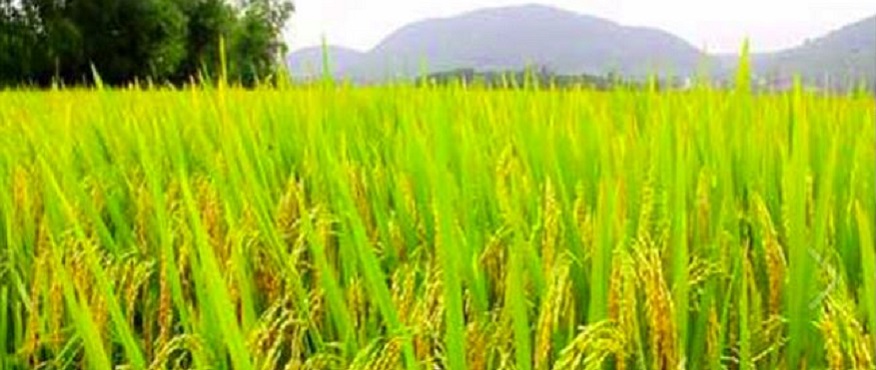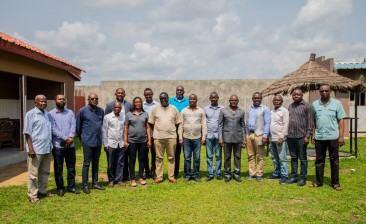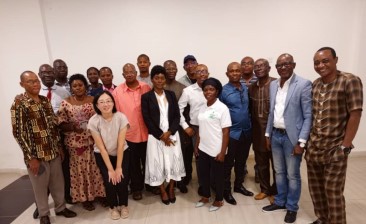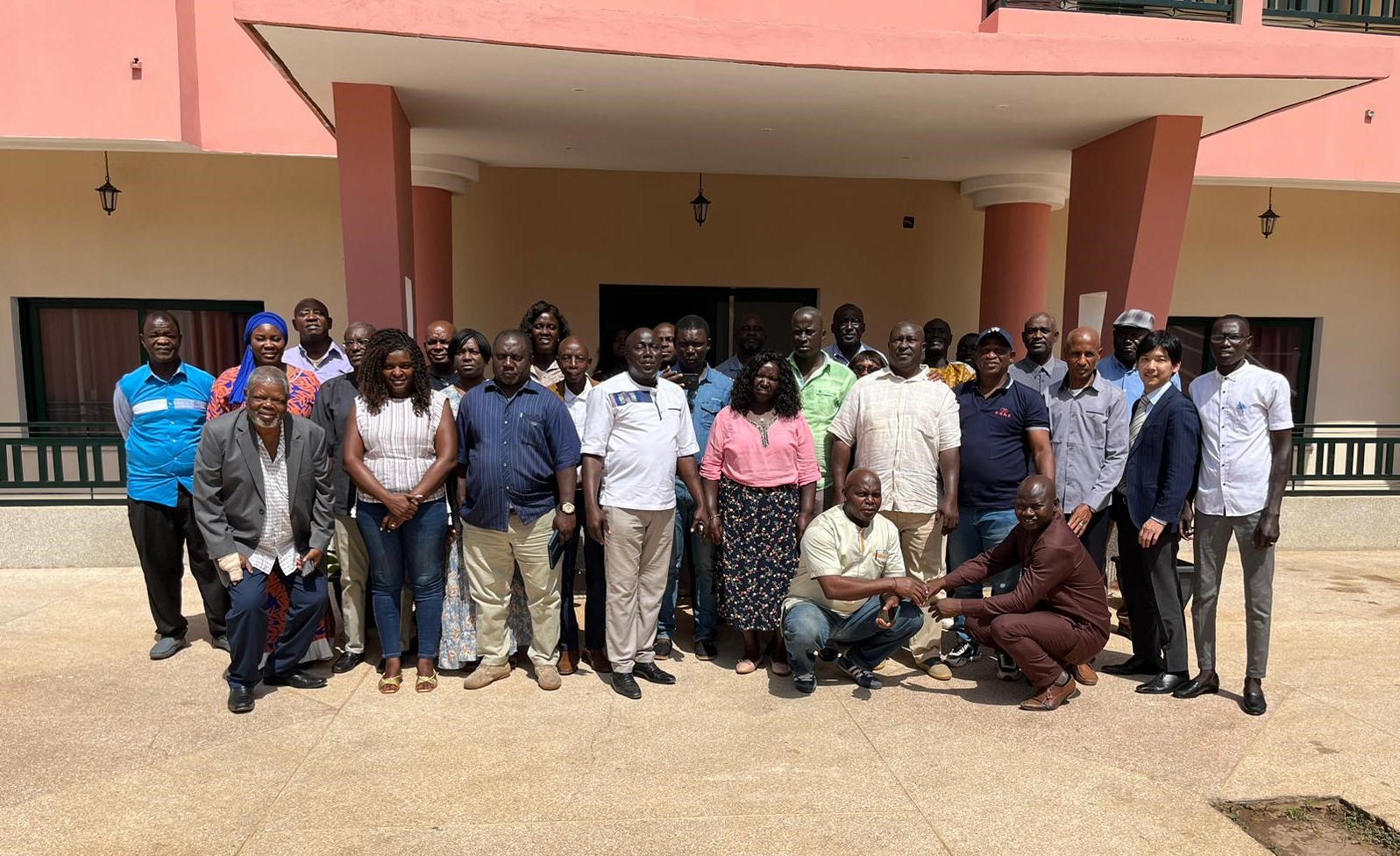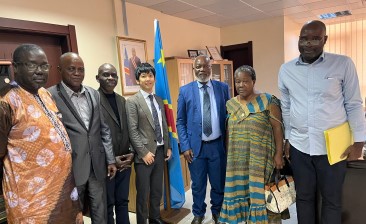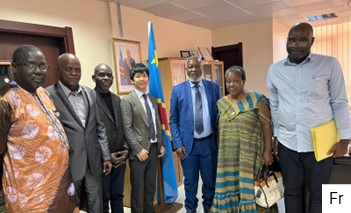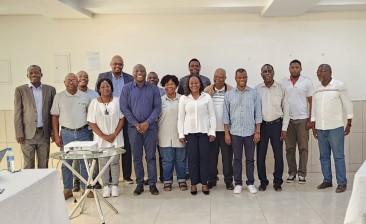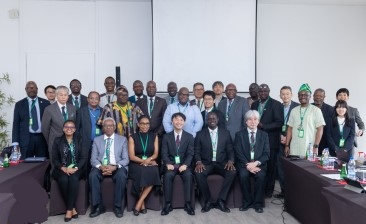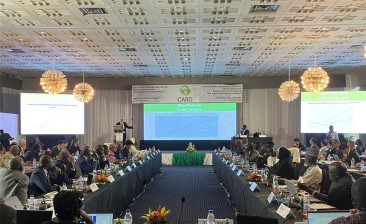Kenya, March 2021
CARD Working Week on Indicators for Monitoring and Evaluation of the NRDS-II in Kenya (1 – 5 March 2021)
With a per capita rice consumption of about 20.6 Kg, Kenya spent 26 billion KShs on importation of milled rice in 2019. Attaining self-sufficiency has thus become a prime motive of Government of Kenya (GoK). In 2008, Kenya became a member of Coalition for African Rice Development (CARD) and soon developed its first National Rice Development Strategy (NRDS-I; 2008-2018). By 2018, the area under rice harvest increased by 55% and domestic rice production quadrupled. However, since rice consumption has continuously been on an upward trend, achieving self-sufficiency has become elusive so far. Local markets have been responding to the gap between demand and domestic supply by importing rice from Asia aggressively. The flourishing rice importation has constantly threatened the marketability of local rice due to its competitive rice price and quality attributes.
Following the extension of the CARD initiative (2019-2030), GoK expressed its interest in revising its NRDS-I to a second phase (NRDS-II; 2020-2030). The NRDS taskforce (referred hereafter as National Rice Technical Committee; NRTC) drafted and validated the NRDS-II in consultation with national stakeholders. Subsequently the NRTC developed bankable project concepts that could lead to concrete implementation of the NRDS-II. Before lobbying for funding for these concept notes, it is imperative that the NRTC members analyse the interventions that are currently under execution and that are being planned (pipeline). Furthermore, to monitor and evaluate the NRDS-II, the NRTC requires a clear set of indicators using which they could assess the progress along the rice value chain.
Earlier the CARD Secretariat proposed a set of indicators that could be used to monitor and evaluate the progress of NRDS implementation in all its member countries and requested comments from NRDS focal points of some member countries, including Kenya. To evolve a consensus through consultations, the focal point NRTC requested the CARD Secretariat to provide technical assistance and discuss with NRTC members. Due to COVID-19 pandemic however, a classical face-to-face working week could not be arranged with Regional Consultant of CARD. Instead the NRTC members agreed to assemble at Machakos and receive technical assistance from the regional consultant through online.
CARD activity and the results
The working week was organized by the NRTC members at Machakos University during 1-5 March. A total of about 14 participants including the NRTC members and resource persons were present during the working week. CARD’s regional consultant joined the participants via MS-Teams platform online. The consultant first briefed the participants on the objectives and expected outputs of the working week.
The consultant then introduced the context on indicators and explained how (process) suitable metrics that could be developed in the context of the NRDS-II. The consultant also explained criteria such as relevance, distinctiveness, feasibility and validity that could be applied while identifying the indicators. By taking the participants through the results framework of the Kenya’s NRDS-II; the regional consultant reminded the participants that while the overall goal is set to increase the domestic milled rice production by 7-fold; (i) expansion of area, (ii) increase in on-farm productivity, (iii) improvements in market competitiveness, and (iv) engagement of private business along the rice value chain as the means (specific objectives) of achieving the goal.
Furthermore, since Kenya’s NRDS-II emphasizes on Resilience (R), Industrialization (I), Competitiveness (C) and Empowerment (E) as the underlying approaches to addressing the specific objectives, the indicators should not only reflect the expected changes but also reveal how the rice value chain related developments augment with the R.I.C.E approach. Through several rounds of discussions, the participants agreed on the following set of indicators for tracking the progress on implementation of Kenya’s NRDS-II: –
| Overall indicators | Resilience | Industrialization | Competitiveness | Empowerment |
|
|
|
|
|
In addition, the participants also established mid-term (2024-25) and long-term (2030) targets and baselines (where available) for the above listed indicators. Prior to the working week, the NRDS focal point Dr. Mary Mutembei collected information on the various on-going projects that are related to rice sub-sector. At the working week, the regional consultant engaged the participants with additional information on the components and activities of these projects; and mapping the project interventions using a table (Sub-sector Intervention Element Matrix; SIEM). During these discussions, the participants included 3 additional projects that are relevant to rice value chain development. Through such analysis, the participants were able to identify gaps in funding of segments of the rice value chain (orange cells in the SIEM for Kenya shown below).
| Value Chain Segment / Intervention Elements | Overall production | Seeds, Germplasm | Fertilizers, Agro-chemicals | Irrigation, Water Management | Mechanization | Land and Crop Management | Harvest, Postharvest processing, Value Addition | Marketing (input as well as outputs) |
| Policy | ||||||||
| Research, Development | RiceMAPP, CaDPERP, NARIGP, BBSRC | KAFACI-DH, BBSRC, RCP | RiceMAPP, CaDPERP | RiceMAPP, CaDPERP, EARiSS, | NARIGP | RiceMAPP, CaDPERP | NVSP | |
| Extension | RiceMAPP, ASDSP-II, NARIGP, EARiSS | KAFACI-Ag Extension | NARIGP | NVSP | ||||
| Finance | ENABLE-Youth, NARIGP, KAIP | NVSP, ENABLE-Youth, EARiSS | ENABLE-Youth, EARiSS | ENABLE-Youth | ENABLE-Youth, EARiSS | ENABLE-Youth, NARIGP | ENABLE-Youth | ENABLE-Youth |
| Quality | NVSP | NVSP | ||||||
| Institutions/ Organs (public and private)/ Linkages | RiceMAPP, CaDPERP, ASDSP-II, ENABLE-Youth, KAIP | ASDSP-II, ENABLE-Youth, EARiSS | ASDSP-II, ENABLE-Youth | ASDSP-II, ENABLE-Youth | ASDSP-II, ENABLE-Youth | ASDSP-II, ENABLE-Youth | ASDSP-II, ENABLE-Youth, EARiSS | ASDSP-II, ENABLE-Youth, EARiSS |
| Gender, Youth | ASDSP-II, ENABLE-Youth | ASDSP-II, ENABLE-Youth | ASDSP-II, ENABLE-Youth | ASDSP-II, ENABLE-Youth | ASDSP-II, ENABLE-Youth | ASDSP-II, ENABLE-Youth | ASDSP-II, ENABLE-Youth EARiSS | ASDSP-II, ENABLE-Youth, EARiSS |
Way forward
Having identified the indicators and set the targets under each indicator for tracking the implementation of the NRDS-II, the NRTC members acknowledged that baselines for several indicators are either not available or not reliable. The participants agreed to reach out to federal and county administrations/institutions for obtaining clarity on the available baselines. The NRTC members requested Rice Promotion Program (RiPP) at the Ministry of Agriculture to take the necessary actions for citing the gap analyses as a rationale for funding the concept notes from the government, development partners and other rice stakeholders. The NRTC members agreed to assist RiPP by providing the necessary technical support on collecting and tracking the indicators during the monitoring and evaluation of the NRDS-II.
